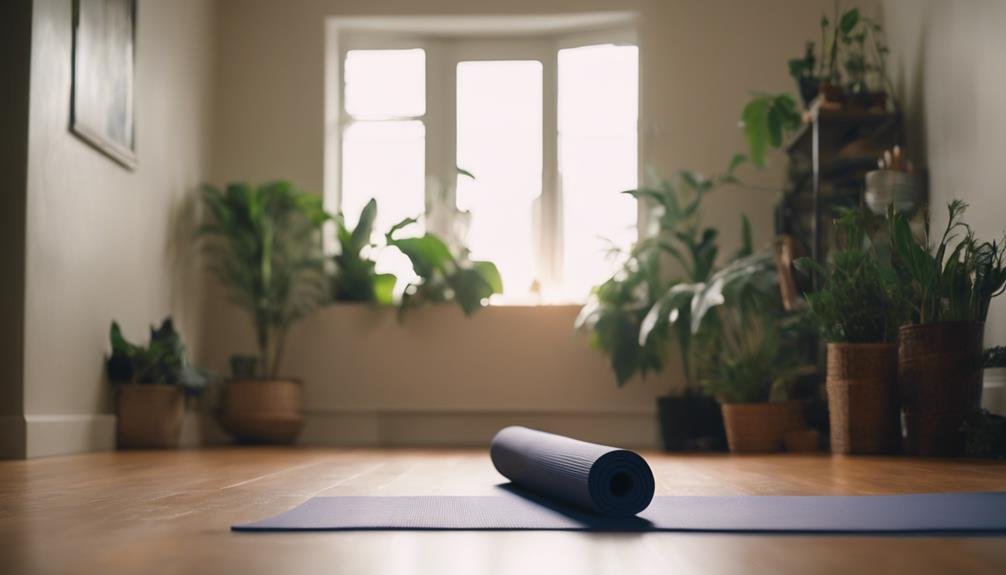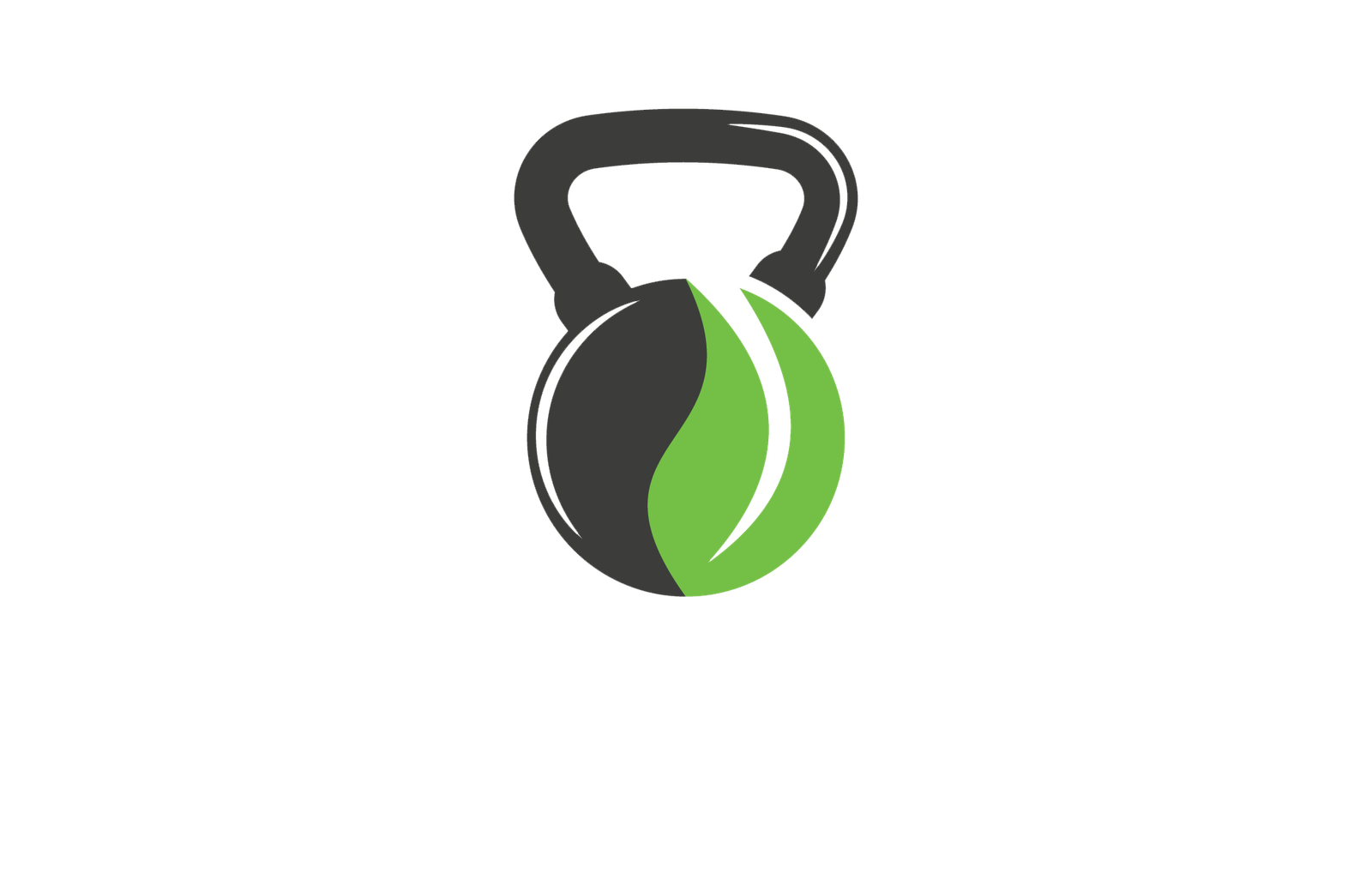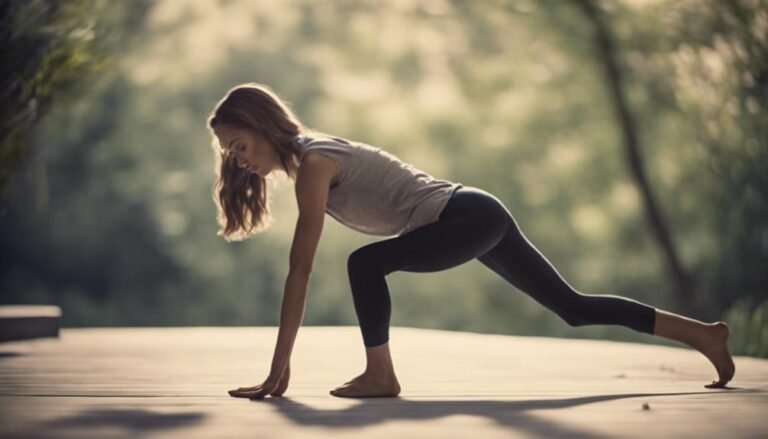Don't miss our holiday offer - 20% OFF!

Beginner Yoga Routines for Home Practice
Gain a deeper understanding of yoga's transformative power and discover how to cultivate inner strength and flexibility in the comfort of your own home.
We're excited to start our yoga journey at home, where over 90% of yogis practice. To establish a strong foundation, we'll begin with short daily practices, even just 10-15 minutes a day, and invest in good quality yoga accessories. Gentle flows will help us cultivate inner strength and flexibility, while foundational poses like Mountain Pose will build confidence. Simple breathing techniques will calm our minds and bodies. As we explore these beginner yoga routines for home practice, we'll discover how to create a peaceful space, avoid common mistakes, and tap into the transformative power of yoga in our daily lives, and that's just the beginning.
Key Takeaways
- Establish a peaceful and distraction-free environment to create a strong foundation for your home yoga practice.
- Start with gentle flows and foundational poses like Mountain Pose to build strength, balance, and confidence.
- Incorporate breathing techniques, such as mindful inhales and calming exhalations, to cultivate relaxation and calmness.
- Begin with short daily routines, even just 10-15 minutes a day, to establish consistency and experience transformative benefits.
- Invest in good quality yoga accessories and choose a dedicated space with calm decor to enhance your home yoga practice.
Getting Started With Yoga Basics
As we begin our yoga journey, let's start with the fundamentals, exploring the essential elements that will form the foundation of our home practice. It's vital to establish a strong Yoga Mindset, recognizing that yoga is a journey, not a competition. We're committing to a Home Commitment, where we dedicate time and space to nurture our physical, mental, and emotional well-being.
To set ourselves up for success, we'll focus on creating a peaceful and distraction-free environment. We'll choose a quiet, comfortable spot with good ventilation, and invest in a good quality yoga mat. We'll also consider investing in blocks, straps, and blankets to support our practice. By doing so, we'll create an atmosphere that encourages relaxation and mindfulness.
As we initiate this journey, let's commit to regular practice, even if it's just 10-15 minutes a day. Consistency is key, and with dedication and patience, we'll start to notice the transformative power of yoga in our lives. By establishing a strong foundation, we'll set ourselves up for a lifelong journey of growth, self-discovery, and wellness.
Building Strength With Gentle Flows
We're now ready to build strength and flexibility by incorporating gentle flows into our daily practice, which will help us cultivate a deeper connection with our bodies and quiet our minds. Gentle flows are a beautiful way to introduce mindful movement into our practice, allowing us to tap into our inner strength and flexibility. As we move through gentle flows, we're not just building physical strength, but also cultivating mental clarity and focus. We're quieting our minds and tuning into our breath, allowing ourselves to become more present and aware. This is where the magic of yoga truly begins – in the gentle, mindful movements that awaken our inner power. We call this Gentle Power, and it's the foundation of a strong and balanced practice. By incorporating gentle flows into our daily routine, we're not only building strength and flexibility, but also cultivating a deeper sense of self-awareness and connection to our bodies. As we flow, we're reminded to listen to our bodies, honor our limitations, and celebrate our triumphs.
Foundational Yoga Poses for Beginners
As we explore the world of yoga, we're excited to focus on the foundational poses that will help us build a strong foundation. We'll start by developing our core strength, which is essential for balance and stability in our practice. Next, we'll move on to essential standing poses that will help us establish good alignment and posture.
Building Core Strength
We build a solid foundation in yoga by cultivating core strength, which enables us to move with greater ease, balance, and control in our practice. A strong core is essential for maintaining good posture, preventing injuries, and enhancing our overall yoga experience.
To build core strength, we focus on engaging our core muscles, particularly the transverse abdominis. This deep abdominal muscle wraps around our spine and pelvis, providing stability and support. When we engage our core, we create a sense of pelvic stability, which is essential for maintaining balance and control in our poses. We can practice core engagement by drawing our navel towards our spine, imagining we're pulling our belly button towards our back. This action helps to activate our transverse abdominis, providing a sense of stability and support. As we move through our practice, we'll focus on maintaining this core engagement, allowing us to move with greater ease, balance, and control.
Essential Standing Poses
Now that we've established a strong foundation through core engagement, let's move on to exploring the essential standing poses that will form the basis of our yoga practice. These poses will help us build strength, balance, and confidence, and will serve as a foundation for more advanced poses later on.
First, let's focus on Mountain Pose, or Tadasana. This foundational standing pose is all about alignment and grounding. We'll engage our core, feel the weight evenly distributed between both feet, and lengthen our spine. Imagine a string pulling our head towards the ceiling, maintaining a neutral neck and relaxed shoulders. This Mountain alignment will help us establish good posture and reduce fatigue.
As we stand tall, let's focus on foot grounding. We'll spread our toes, feeling the connection between our feet and the earth. This subtle movement helps us root down, finding stability and balance. By incorporating these essential standing poses into our daily practice, we'll build a strong foundation that will benefit our overall well-being and set us up for success in our yoga journey.
Simple Breathing Techniques for Relaxation
By incorporating simple breathing techniques into our daily routine, we can quiet the mind, calm the body, and tap into a deeper sense of relaxation. We can start by focusing on mindful inhales, filling our lungs with air and feeling our chest expand. As we inhale, we can silently repeat a calming phrase to ourselves, such as "I am relaxed" or "I am at peace."
Next, we can practice calming exhalations, slowly releasing our breath while feeling our body relax and unwind. This simple act can be incredibly grounding, helping us let go of tension and anxiety. We can try inhaling for a count of four, holding for a count of four, and exhaling for a count of four, repeating this cycle several times. As we breathe, we can bring our attention to the sensation of the air moving in and out of our body, letting go of any thoughts or distractions. By incorporating these simple breathing techniques into our daily routine, we can cultivate a sense of calm and relaxation that stays with us throughout the day.
Short Morning Yoga Routines
Starting our day with a short morning yoga routine can be a powerful way to set a positive tone and boost our energy levels. By incorporating a daily yoga practice into our morning routine, we can cultivate a sense of calm and clarity that will stay with us throughout the day.
One of the most effective ways to establish a morning yoga routine is to create a consistent daily discipline. This can be as simple as committing to 10-15 minutes of yoga practice each morning. We can start with some gentle stretches, followed by a few rounds of sun salutations to get our blood flowing.
To add an extra layer of mindfulness to our practice, we can incorporate morning mantras. These can be simple phrases or affirmations that we repeat to ourselves as we move through our practice. For example, we might repeat "I am strong and capable" or "I am worthy of love and respect." By combining physical movement with mental focus, we can create a powerful and transformative morning routine that sets us up for success.
Easy Yoga Stretches for Flexibility
As we cultivate a sense of calm and clarity through our morning yoga routine, we can further enhance our flexibility with easy yoga stretches that gently awaken our bodies. We can start with simple stretches like neck rolls, shoulder opens, and chest expansions to loosen up our upper body. For a deeper stretch, we can incorporate yoga accessories like blocks, straps, or blankets to assist us in reaching those hard-to-reach areas. Our stretching routines can be tailored to focus on specific areas, such as hips, hamstrings, or quadriceps, depending on our individual needs. We can also experiment with dynamic stretches like leg swings, arm circles, and torso twists to get our blood flowing and energy levels up. Remember, the key is to listen to our bodies and honor their limitations. By incorporating these easy yoga stretches into our daily routine, we can experience increased flexibility, reduced tension, and a greater sense of overall well-being.
Common Mistakes to Avoid at Home
When practicing yoga at home, we need to be mindful of common mistakes that can undermine our progress and even lead to injury. We've all been there – getting caught up in the excitement of trying new poses or pushing ourselves too hard. But it's essential to recognize the signs of overexertion, such as dizziness, nausea, or muscle strain. Ignoring these warning signs can lead to setbacks and prolonged recovery time.
Another pitfall we need to watch out for is distraction traps. It's easy to get sidetracked by our surroundings, whether it's our phones, family members, or household chores. But when we're practicing yoga, we need to create a sense of focus and calm. We can do this by setting aside a dedicated space, turning off notifications, and committing to our practice.
Creating a Peaceful Yoga Space
We carve out a serene oasis in our homes by deliberately designing a peaceful yoga space that fosters focus and calm. As we step into our tranquil retreat, we want to feel a sense of calm wash over us, allowing us to breathe deeper and relax. To create this haven, we opt for calm decor that exudes serenity. We choose soothing colors like soft blues, pale greens, and creamy whites that calm our minds and quiet our thoughts. We clear the space of clutter, creating a sense of openness and freedom. A few well-placed plants and a subtle scent of essential oils complete the ambiance. As we unroll our mats, we feel a sense of calm anticipation, ready to embark on our practice. By intentionally designing our yoga space, we cultivate an atmosphere that nurtures our well-being and sets the tone for a transformative practice.
Frequently Asked Questions
How Often Should I Practice Yoga to See Noticeable Results?
"We find that consistency matters, so we aim to practice yoga 2-3 times a week, scheduling it in our calendars like we would any other priority. This commitment yields noticeable results and a deeper connection to our inner selves."
Can I Do Yoga if I Have a Pre-Existing Injury or Condition?
'We understand concerns about practicing yoga with a pre-existing injury or condition. With Injury Modification and Condition Awareness, we can adapt poses to facilitate a safe, beneficial practice that honors our unique needs.'
What if I'm Not Flexible – Can I Still Do Yoga?
"As we weave through the tapestry of self-doubt, we realize that flexibility isn't a prerequisite for yoga; we can modify poses to meet our needs, building confidence with each gentle stretch, and unfolding a practice that honors our unique bodies."
Do I Need to Buy Expensive Yoga Equipment or Props?
"We don't need to break the bank on yoga equipment; we can start with the essentials like a good mat and explore prop alternatives like straps made from towels or blankets, keeping our practice accessible and affordable."
Can I Practice Yoga if I'm Over a Certain Age?
As we gently glide into golden years, we wonder, can we still bend and breathe? Fear not, friends, for yoga has no age limitations; senior modifications adapt poses to suit our silver-haired selves, ensuring serenity and flexibility at any stage.
Conclusion
As we wrap up our yoga journey together, we might wonder if we're doing it "right" or if we're just not flexible enough. But the truth is, yoga isn't about being perfect – it's about showing up, being kind to ourselves, and honoring our unique bodies. By committing to a regular home practice, we'll start to notice subtle yet profound shifts in our physical, emotional, and mental well-being. So let's take a deep breath, be gentle with ourselves, and celebrate the journey, not the destination.



